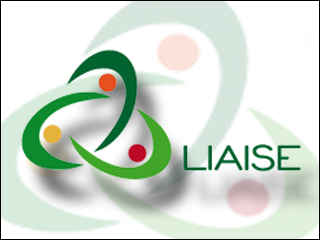WUR Alterra ~ LIAISE
Wageningen University and Research Centre / Alterra
Project: LIAISE
Policies aiming at sustainable development need a solid foundation in Impact Assessments (IA) using a variety of IA tools.
These types of tools are, for example, climate and/or agro-economic models that can assess the impact of climate change on agriculture, or on the types of crops grown, which ultimately affects the income of farmers and their ability to compete. In addition, policy makers in Brussels can assess the impact of policy measures such as the effect of lower import taxes on the flow of goods.
Exis ting research shows that the full potential of IA is not being realised. Many tools to support IA have been developed, but are not yet being fully deployed by policy makers.
ting research shows that the full potential of IA is not being realised. Many tools to support IA have been developed, but are not yet being fully deployed by policy makers.
This raises questions such as:
- do policy makers know which tools are available?
- do they know to which questions the tool can provide answers?
- which criteria does a policy maker use to deploy a tool?
- why do policy makers avoid using certain tools?
These missed opportunities are symptomatic of a large and deep divide between the two broad communities of IA researchers and IA practitioners. Practitioners tend to look for tools that are simple and transparent while researchers are more interested in the sophistication and innovative aspects of assessment tools. The main purpose of LIAISE is to identify and exploit opportunities to bridge the gap that exists between these two communities in a way that leads to an enhanced use of IA tools in policy making.
The shared IA toolbox is an important means to bridge this gap. Among others, this includes best practices and descriptions of models. This information is intended on the one hand to help the scientist arrive at better choices when constructing a model and makes clear which information is relevant when describing a model, and on the other to guide policy makers when choosing a tool by clarifying the limitations and pre-conditions as well as the specific applicability of the various tools.
Besides the toolbox LIAISE includes a whole range of other activities, such as training young scientists and maintaining a shared research agenda.
EU-xpert: writing made easy
The LIAISE project decided to use EU-xpert as a web-based tool because experience gained from other projects has shown that the constant back-and-forth e-mailing of sections of text led to a certain degree of chaos. With EU-xpert all the work is done in a single document with the EC template as the starting point. Anyone can observe what is going on and submit their comments.
The tool was presented for the first time during the kick-off. As the deadline for the Periodic Report drew nearer, the tool was explained again to the group of Work Package leaders via Skype.
Because the project involved internal reports, many of the texts were already available, though some had to abbreviated somewhat in places. The report was well structured. A slight problem arose regarding the numbering of sections, but that was rapidly fixed by FP-tools. The Work Package leaders were responsible for the texts and they could ask scientists, mostly from their own institute, for contributions and input.
The progress could be monitored by observing the system, and the previous version could be accessed. If something was still missing, it could be simply made into a task. The deadline allowed enough time to thoroughly edit the final document.
The reporting process was smooth and uncomplicated because all the work was done in a single document. The staff fulfilled all their tasks. Because the user interface is uncomplicated the tool is simple to use. Even the quality of the texts improved, because contributors could read each other’s texts, and more uniformity could be achieved.
EU-fin: lessons learned
In previous projects use was made of spreadsheets that were e-mailed back-and-forth between the partners and the project office. Version control was difficult as was proper oversight of the correct figures and reports. This is why the client chose the EU-fin web-based tool.
EU-fin can be set up with three levels of aggregation that have increasing degrees of detail: at the partner level, at Work Package level, and at the task level. LIAISE decided to set up the tool to operate at task level so as to closely monitor the budget and the costs.
A trial was conducted after one year. The budgets were entered and divided between the tasks. The different types of users were defined. Partners were asked via a group e-mail from the system to enter the actual costs in the system.
Apparently, most of the partners encountered difficulties in dividing the financial data across the tasks. It appeared to involve an enormous amount of detail. The issue was further compounded by some of the costs relating to multiple tasks, which meant that it was not clear to which task the costs had to be allocated. Consequently, not all the partners used the tool, or all the costs were allocated to the first task.
The problems were such that after careful consideration it was decided to set up the tool at Work Package level. FP-tools took care of this change.
FP-tools: service
Service is important and FP-tools responded quickly and efficiently.
